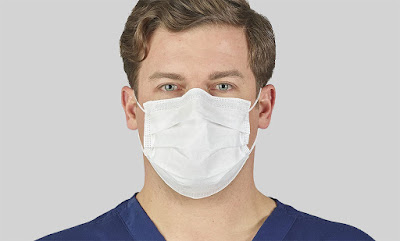What is ASTM F3502?
ASTM F3502-compliant barrier face coverings are Designed to fit snugly to the face, covering both the mouth and nose, and reducing gaps Primarily intended for use as source control and are not considered medical masks. Since February of 2020, we’ve been asking for standards for masks/face coverings used by our communities. Finally, the American Society for Testing and Materials (ASTM) has established a national standard (ASTM F3502) for “Barrier Face Coverings” that are neither medical masks according to ASTM F2100 standards nor respirators according to NIOSH standards. This new standard establishes minimum requirements for design, performance, and testing that will allow users to compare mask options, and provides mask makers standards to strive for. These standards are not mandatory, but can help distinguish well-tested masks in the marketplace. For home sewists and small manufacturers, the ASTM guidance can help clarify what types of testing to look for in our reading, and clarify testing goals for those headed to the lab.
For covers
plans that are not centered on making a tight seal/fit to the face (e.g.,
creased clinical covers), air can spill around the edges of the veil, conveying
unfiltered particles in and out. ASTM F3502 requires covers be intended to fit
cozily to the face, covering both the mouth and nose, and decreasing holes.
Covers should have a method of being held to the face, and estimating data
ought to be given. Plans should be investigated to show that the item lessens
spillage around the edge of the veil or different territories. Vents or valves
are precluded. Click here for more astm f3502-21
information !
F3502 Filtration
In general, masks that
provide more filtration offer the user more protection than those that provide
less filtration. However, when it comes to filtration testing, results depend
strongly on the size of the particles used and specific testing methods.
Studies should always be compared apples to apples” with the same particle
sizes, materials, flow rates, and humidity levels.
ASTM F3502 follows the
NIOSH methodology for NaCl Aerosols Testing utilizing 0.3um particles
.Importantly, 0.3um is the most profoundly penetrant size for most materials,
making this a most pessimistic scenario filtration test. Filtration execution
against bigger particles, for example, respiratory beads somewhere in the range
of 1um and 10um, is by and large a lot higher. Buy now click here supplier of f3502 masks
Relevance for Sewists and Makers
Face
coverings that are compliant with these new standards are most likely to be
produced by medium-to-large scale manufacturers that have the resources and
access to accredited testing labs required to be in compliance with all the
ASTM F3502 standards described above (see the Appendix for additional
details on testing costs etc). However, this does not mean that sexists should
stop making masks, nor does it mean that there is nothing useful in these
standards for sexists and small-scale mask makers. Here is more information reusable f3502 masks
Testing Performance:
To qualify
as ASTM F3502-compliant, the minimum criteria (Level 1)
for both sub-micron particulate filtration efficiency of 20% and
air flow resistance 15 mm H2O must be met. In addition, a higher
performance criteria (Level 2) for filtration is available for masks
with 50% filtration efficiency. For breathability, Level 2 performance
classification is available for masks with an air flow resistance of 6 mm
H2O. It is important to note that filtration and breathability are evaluated
separately, so it is possible to have Level 1 filtration and Level 2
breathability and vice versa. Classifications are based on the poorest results
of all tested samples.

Comments
Post a Comment